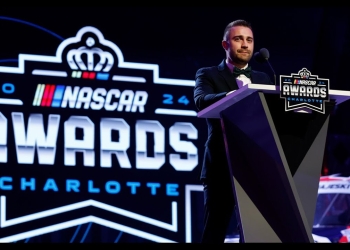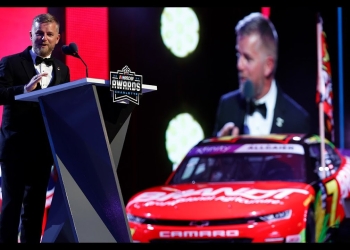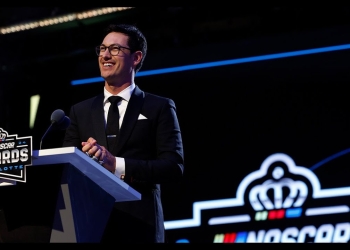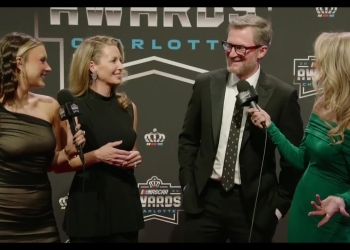Watkins Glen Chaos: LaJoie and Busch Tangle in Lap 1 Melee
The tranquil Finger Lakes region of New York was shattered by the thunderous roar of NASCAR engines as the Cup Series descended upon Watkins Glen International. But the serenity was short-lived, as pandemonium erupted before the field could even complete the first lap. At the heart of this maelstrom were Corey LaJoie and Kyle Busch, two drivers whose trajectories collided in a moment that would reshape the race and potentially alter playoff destinies.The Incident Unfolds
As the green flag dropped and 40 stock cars surged towards Turn 1, the usual jockeying for position began. LaJoie, piloting the No. 7 Spire Motorsports Chevrolet, found himself in close quarters with Busch's No. 8 Richard Childress Racing Chevrolet. What transpired next was a ballet of bent metal and burning rubber that would make even the most seasoned crew chiefs wince. LaJoie, known for his tenacity behind the wheel, recounted the incident on his "Stacking Pennies" podcast with the precision of a forensic analyst:"I was trying to dive underneath the 54 [Ty Gibbs], and as I did, Kyle was coming down across my nose. It was one of those racing deals where three-wide just doesn't work going into Turn 1 at The Glen."
The Ripple Effect
The contact between LaJoie and Busch set off a chain reaction that would make a billiards champion proud. Cars scattered like bowling pins, with several playoff contenders caught in the crossfire. The incident was a stark reminder of how quickly fortunes can change in NASCAR, where a split-second decision can mean the difference between Victory Lane and the garage. • Christopher Bell • Chase Elliott • Ty Gibbs • Daniel Suárez These were just a few of the names caught up in the melee, their carefully crafted race strategies now in tatters before the echoes of the start command had even faded.Technical Analysis
From a technical standpoint, the incident at Watkins Glen highlights the unique challenges posed by road course racing in NASCAR. Unlike their oval counterparts, road courses demand a delicate balance of aggression and finesse, especially in the opening laps.Click here to preview your posts with PRO themes ››
1. Braking zones become critical areas for overtaking 2. The racing line varies greatly, leading to more side-by-side action 3. Elevation changes add an extra layer of complexity to car control 4. Tighter turns increase the likelihood of contact The first turn at Watkins Glen, with its sharp right-hand configuration, is particularly treacherous. It's a corner that has claimed many victims over the years, from rookies to seasoned veterans alike.Car Setup Considerations
The incident also sheds light on the intricate dance of car setup for road courses. Teams must strike a balance between: • Downforce for cornering stability • Straight-line speed for the long backstretch • Mechanical grip for the slower, technical sections It's possible that the setups chosen by LaJoie and Busch contributed to their inability to avoid contact. A stiffer suspension setup, while beneficial for quick direction changes, can make the car more prone to sliding under heavy braking.Historical Context
This isn't the first time Watkins Glen has served up drama on the opening lap. The track's history is peppered with incidents that have altered the course of championships and careers. One can't help but draw parallels to the 1991 Budweiser at The Glen, where a multi-car pileup in Turn 5 took out several front-runners and set the stage for Ernie Irvan's maiden Cup Series victory.Playoff Implications
With the playoffs looming on the horizon like a thunderhead over the Seneca Lake, the Watkins Glen incident carries extra weight. For drivers like Kyle Busch, already locked into the postseason, the primary concern is momentum and playoff points. But for those on the bubble, a poor finish could be the difference between title contention and watching from the sidelines. The incident serves as a microcosm of the high-stakes nature of NASCAR's playoff system, where every point is precious and every position fought for with tooth and nail.Click here to preview your posts with PRO themes ››
LaJoie's Perspective
Corey LaJoie's breakdown of the incident on his podcast offers a rare glimpse into the split-second decision-making process of a NASCAR driver. His candor and willingness to analyze the situation publicly speak volumes about his character and his commitment to the sport."You hate to see it happen, especially with playoff implications on the line. But at the end of the day, we're all out here racing hard, and sometimes these things happen."LaJoie's ability to balance competitive fire with sportsmanship is a reminder of why he's become a fan favorite in recent years.









